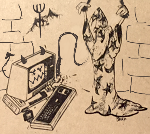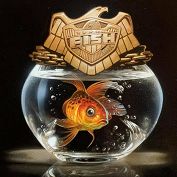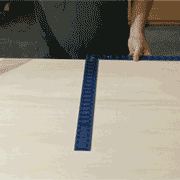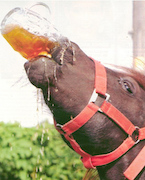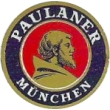|
Jo3sh posted:Eh, I disagree, personally. Back in the day, I was looking for nip bottles to bottle a barleywine. That was before I was kegging. Yeah, I did a lot of bottle searching last summer for mixed ferm stuff I did. I ended up with 500mL, but the smallest bottles for things under pressure in brown is about in the 330mL or 12 oz range. They go a little smaller but I could really only find clear bottles that are smaller and almost never for anything under pressure. Even in wholesale catalogues thereís just not much out there that even ticks the major needs for bottling (brown glass, reusable cap seal, pressure rated). I have seen some German ice beer in small 6ish oz bottles, but youíll break the bank collecting enough to bottle a batch of barley wine.
|
|
|
|

|
| # ? Jun 11, 2024 16:42 |
|
Jhet posted:Iíve only seen swing top clear bottles that small and I donít know if theyíre pressure rated or not. Yeah, I was more thinking that at some point you could get something too acidic in there and it would react. Like maybe filling it full of vinegar would be bad (or maybe not?), but I wasn't 100% sure if having a tart beer in there would be enough.
|
|
|
|
Another question, how sensitive is beer to chlorine? I brewed a dark beer (going for a porter but the roasted character was pretty low in mine) back around Halloween last year, so ~3 months ago. The beer seemed pretty OK when I had some fresh ones about when they finished carbonating, but now the ones I've tried have some kind of plasticy taste (or at least that's the best description I can think of). It's rather unpleasant. I know my tap water is very chlorinated, I don't even drink the plain tap water it's so bad, I filter it through a brita. I treated with about a 2x dose of campden tablet in my water (according to my notes, ~0.1g crushed tablet for ~2.5 gal water). I did 2x since I couldn't figure out a good way to measure out 1/8 of a tablet. I can't remember where I got the water for the sanitizing solution for my bottles though, I may have just pulled it straight from the tap. Could that be enough to cause off-flavors?
|
|
|
|
Eeyo posted:Another question, how sensitive is beer to chlorine? I brewed a dark beer (going for a porter but the roasted character was pretty low in mine) back around Halloween last year, so ~3 months ago. The beer seemed pretty OK when I had some fresh ones about when they finished carbonating, but now the ones I've tried have some kind of plasticy taste (or at least that's the best description I can think of). It's rather unpleasant. If there's really that much chlorine, yeah, unfortunately. Plastic is normally chlorophenols from the chlorine in the water. If campden tabs are too inconsistent you can buy bags of powdered potassium metabisulfite that will be easier to weigh. If it's chlorine, you can boil it and leave it cool uncovered too and that will help. I've left it to sit out overnight (24h) and that should be good to off gas a bunch of it too. Chloramine is a different beast as it's mixed with ammonia and is much harder to remove from the supply. It's a pain to remove with anything but the expensive charcoal filters. Here's a good article on it https://www.morebeer.com/category/water-filters.html#Removing%20Chloramines And according to it you shouldn't worry about adding extra to make sure it's all out of there. It won't impact your water profile significantly unless you're brewing something super soft.
|
|
|
|
If you would not drink your tap water you should definitely not be brewing with it.
|
|
|
|
thotsky posted:If you would not drink your tap water you should definitely not be brewing with it. This is a good point, aside from the chlorine/chloramine. At a very simplistic level, brewing is taking water and adding stuff to it, then concentrating it and fermenting it. If the water tastes bad, the beer is probably going to taste bad. That said, I live in a city that aggressively adds chlorine and chloramine to the water, because otherwise there's poop in it if it rains too much, and I've had 2 batches out of 100 or so go bad from chlorophenols. I don't filter my water, just add campden and salts/acid, and it's possible I messed up adding campden on those two batches, or it's possible the city gave me extra bleachy water those days.
|
|
|
|
I can use my own tap water, luckily. It's from out in the sticks and treated in a modern plant so it's not chlorinated at all, it tastes absolutely wonderful - like a mountain stream on tap. If the tap water is that lovely I'd honestly consider buying bottled water in bulk to brew. And also potentially get rid of whatever rear end in a top hat politicians you have that don't give a poo poo about clean tap water. It's a surprisingly simple issue with a huge impact on the population and life in general.
|
|
|
|
more falafel please posted:This is a good point, aside from the chlorine/chloramine. At a very simplistic level, brewing is taking water and adding stuff to it, then concentrating it and fermenting it. If the water tastes bad, the beer is probably going to taste bad. Iíll maintain that youíre on the right track. Chlorine can be removed easily enough. I switched to powdered KMS for a similar reason. When I lived in Chicago the taste of chlorine would vary with the rain, and it was there because they needed to make the drinking water safe to drink for everyone. Iíd just weight out double the KMS those weeks and itís never been a problem. Or maybe you just forgot to dose your sparge water. Iíd still buy the powdered stuff. Itís pretty cheap and easy to measure out. And it dissolves really well. Itís a much easier problem than dealing with really hard water, as you can just mix something in and wait a few minutes. Dealing with hard water can require complex and expensive water filter systems and even then it wonít always taste great. My parents have dealt with this for almost 20 years living in the country around farms and they finally have a system that can deal with the fluctuations from rain.
|
|
|
|
Ok thanks, Iíll probably just try bottled water for now so that Iím sure itís not that. Iíll use it for the brewing water plus the sanitizing water as well. Iím doing 2.5 gallons so it wonít be as bad as carrying like 7 gallons up my stairs. If I can get some good brews with that then maybe I can branch out and do some testing to see if my tap water would be any good.
|
|
|
|
yeah I usually buy gallons of generic spring water from my local store
|
|
|
|
Jhet posted:Iíll maintain that youíre on the right track. Chlorine can be removed easily enough. I switched to powdered KMS for a similar reason. When I lived in Chicago the taste of chlorine would vary with the rain, and it was there because they needed to make the drinking water safe to drink for everyone. Iíd just weight out double the KMS those weeks and itís never been a problem. Or maybe you just forgot to dose your sparge water. Iíd still buy the powdered stuff. Itís pretty cheap and easy to measure out. And it dissolves really well. Yeah, I'm gonna start buying the powdered stuff, I'm weighing out my other salts already, and crushing tablets is annoying. I also use a little bit in my seltzer water (none and it tastes like chlorine, too much and it tastes like sulfur) and I'm sick of trying to measure out 0.16g off of a tablet. Of course I have like 80 tabs left, so it'll take a while to get through it.
|
|
|
|
After living in an apartment that was a pain to brew in and no access to temperature controlled fridge space, I bought a Mexican lager kit with the admittedly stupid intention of bringing it to a friends when done brewing to lager in his basement fridge, but then Covid happened, and then we bought a house several months ago which conveniently has its own basement fridge but things were hectic for forever and this recipe kit just sat and sat and sat. Finally, I unpacked and cleaned up/sanitized all of my brewing stuff and got the propane tank filled and set up shop in my not shiny new garage on a 15 degree F day and started brewing. Predictably, the liquid yeast that had been in the fridge for nearly a year didnít feel like yeasting. I couldnít find it in stock online anywhere, so I ordered a packet of Saflager that took 5 days to arrive, at which point I still didnít have a single bubble of activity. Pitched that and after two days itís finally happily bubbling away. Iím fully expecting this to be God awful, but it felt good to finally get another brew done, and Iím using this as an excuse to buy C02 and lines/taps to get my kegs I bought and never set up ready to go. I even ordered another fancy schmancy Lager recipe kit to probably ruin!
|
|
|
|
I'm not sure if you've bought them yet, but I just switched my keezer over to duotight/push-fit for gas and liquid lines and it's a life changer for me. I hate those little screw clamps, and barbs hate my knuckles.
|
|
|
|
Ok I'm thinking about doing a simple saison-style beer next. I'm still doing extract, should I add anything other than just some pale malt extract? With a 3 lb bag of dry malt extract, 2.75 gal batch, and a high attenuation I think I'd be at about 5.5% ABV or thereabouts. I saw some recipes using a bit of wheat malt extract (presumably to give it a little more body?) but that would make it a pretty high ABV, around 5-6 is where I'd want it. I could always mix-and-match 1 lb bags but that's less cost effective. My closet is ~74 F (23 C) ambient temperature so hopefully that's warm enough. I'm just going to use the dried belle saison to make things simpler for now.
|
|
|
|
Eeyo posted:Ok I'm thinking about doing a simple saison-style beer next. I'm still doing extract, should I add anything other than just some pale malt extract? With a 3 lb bag of dry malt extract, 2.75 gal batch, and a high attenuation I think I'd be at about 5.5% ABV or thereabouts. I saw some recipes using a bit of wheat malt extract (presumably to give it a little more body?) but that would make it a pretty high ABV, around 5-6 is where I'd want it. I could always mix-and-match 1 lb bags but that's less cost effective. Saison is a style that's pretty wide open to interpretation, so you can do a lot of things with it. I usually do some wheat or rye, but iirc Saison DuPont is 100% Pilsner malt. I wouldn't add crystal, but if you wanted a little more color and Maillard reaction products you could steep some toasted malts like Victory/biscuit/aromatic/melanoidin. For reference, most wheat extract is a blend of wheat and base pale barley malt, so you could use 100% wheat extract and it wouldn't be a problem, but using just pale malt extract (if your supplier has a "Pilsner" or "extra pale" extract, I would use that) will still work great. From there, I would pick a hop you want to use -- anything noble is going to be great, my personal favorite is Styrian Goldings, but Saaz, Tettnang, East Kent Goldings, or anything similar will work for a more traditional saison, or you can go all american on it and use Citra if you want. I like to do 60, 20, and 0 minute additions, but you can probably skip the 20 minute to simplify. Aim around 30ish IBU and go nuts. Belle Saison is great, I use it all the time.
|
|
|
|
Eeyo posted:Ok I'm thinking about doing a simple saison-style beer next. I'm still doing extract, should I add anything other than just some pale malt extract? With a 3 lb bag of dry malt extract, 2.75 gal batch, and a high attenuation I think I'd be at about 5.5% ABV or thereabouts. I saw some recipes using a bit of wheat malt extract (presumably to give it a little more body?) but that would make it a pretty high ABV, around 5-6 is where I'd want it. I could always mix-and-match 1 lb bags but that's less cost effective. I enjoy 96% Pilsner and 4% Dextrose for clean saisons. Wheat is not obligatory at all.
|
|
|
|
For a 5gal extract saison, I do 8oz each of Caramel 40L, Honey Malt, and Caramalt, just to balance out the big esters I like in my saisons. In that temperature range I really prefer Wyeast 3711 French Saison, after having tried a few yeasts at 70-ish degrees. Belle was fine for me, but I didn't feel floored by it or anything. Wyeast 3724 is my absolute favorite, but I can only make it in summer. It needs to be like 85-90 degrees, which is a little bonkers.
|
|
|
|
Belle saison is the same strain as 3711. Iím a big fan of the Blaugies isolates the last couple years. Wyeast 3726 and the ones The Yeast Bay puts in their saison blends.
|
|
|
|
I'm doing a beer exchange where everyone does one of Randy Mosher's Christmas beers in his Radical Brewing book. Since I've never tried a gruit, I'm brewing his Christmas gruit. In the description he mentions about adding a mixed lambic culture in secondary. That got me thinking about my approach. I'm thinking of using Sour Batch Kidz from Imperial to achieve the same results. Anyone played around with it?
|
|
|
|
|
I second Blaugies, I tend to use the Imperial Rustic isolate. It's got good, classic saison flavor, while maybe leaning slightly more towards fruity esters than Dupont. It never really goes into medical phenols no matter the temp I ferment it at, and it has a lot of the performance, attention and glycerol production that 3711 do.
|
|
|
|
Going to start brewing again this year after several years of hiatus. Previously mostly did BIAB but this time I saved up and got me a fancy new tiered system for all grain stuff, Iím super excited to get started. ... only after I assembled everything for dry fitting I realized they forgot to ship the plate wort chiller  need that thing to figure out my hose lengths and to make a proper mount for it and the pump. need that thing to figure out my hose lengths and to make a proper mount for it and the pump.Got my heart set on doing an altbier batch first once things are together. I have a sensor set up and the cellarís been keeping a very steady 56-58 degrees, which should work well for wyeast 1007 (German ale) so Iím pretty stoked! Edit: turns out the chiller is shipped from the manufacturer and the order tracking page is just confusing/wrong. Might be 3 to 4 weeks until Iíve got everything together. In the meantime Iíve got a small immersion chiller that might still do the trick but take waaay longer. Fortaleza fucked around with this message at 20:19 on Feb 7, 2021 |
|
|
|
Saturday was my very first brew day! The anvil "forge" burner worked wonderfully. It was quite the spectacle for me as it was like -4 degrees C and felt oddly satisfying to brew out in the cold like that. Less than 24 hours later I confirmed the primary fermenter airlock was bubbling as expected. I only hope that I didn't contaminate the batch because when I inserted the wort chiller I had to wrap the neck with some paper towels to absorb some leaks and a corner of the paper towel touched the wort surface ever so briefly. Now I'm not sure what to do next. The instructions say wait 5-7 days before transferring to a secondary before waiting another week to put priming sugar into a bottling pail and then racking the brew into the bottles. I'm not sure how precise these instructions are? It says the only way to know for sure is to take readings with the hydrometer but I don't want to open the container and risk contaminating the brew if I have to do. I'm thinking I'll skip the secondary fermentation and wait 2 weeks before transferring to the bottling pail. What I'm worried about is the yeast dying out so I don't get bottle carbonation or alternatively I do it too early and the bottles blow up. Any tips here?
|
|
|
|
Do you have a gravity measuring device (Refractometer, or Hydrometer)? Don't worry at all about the secondary it's a useless step unless you're doing some kind of addition, or letting it sit for 6+ months. If you can't measure if the Beer is done (measuring the gravity), you can be safe.. wait for the airlock to stop bubbling, then wait a week or so to bottle. Your yeast wont die.. My beer sits for weeks in it's primary before I get to bottling usually (I bottle carb). You'll be fine.
|
|
|
|
tater_salad posted:Do you have a gravity measuring device (Refractometer, or Hydrometer)? I have a hydrometer and that beer/wine thief device from fermatech. I'm just worried that taking a reading during the fermentation process could harm the brew or contaminate it when I open the lid.
|
|
|
|
Kraftwerk posted:I have a hydrometer and that beer/wine thief device from fermatech. I'm just worried that taking a reading during the fermentation process could harm the brew or contaminate it when I open the lid. I mean... not in any significant way. Sanitize your hydrometer before use and wait a week before testing. You can use the bubbles to guess at it being nearly done, but it's not a good measure. You want to minimize the number of times you open the lid* to keep oxygen out of the way, but just clean and spray things with sanitizer and you should be fine. The key here is to relax, take your time, and check on it in 7-14 days. You'll learn how the yeast acts in your environment and it may be quicker the next time, or slower too. Both are okay. Secondary transfers are a hard pass for most beers**. They'd only introduce excess oxygen for not really gaining anything. *Sometimes some of us will open ferment for a bit, so no solid lid, just a cover to keep dust and critters out. So as with all things brewing, every rule can be broken if you know why you're breaking it. Comes with time, experience, and reading more than is probably reasonable. ** Another set of exceptions here, mostly related to mixed ferm and fruited beers.
|
|
|
|
Kraftwerk posted:I have a hydrometer and that beer/wine thief device from fermatech. I'm just worried that taking a reading during the fermentation process could harm the brew or contaminate it when I open the lid. get a spray bottle from the dollar store.. spray the rim with your solution then open it up. after fermentation gets rolling you should be okay with not having infections. If you're super worried just wait about 2 weeks or so, most yeast will be done at that point really, generally I only see 3-7 days of vigerous fermentation then you might get some finishing up / cleaning up of the yeast. Yeast won't die if it sits for a month.
|
|
|
|
tater_salad posted:get a spray bottle from the dollar store.. spray the rim with your solution then open it up. after fermentation gets rolling you should be okay with not having infections. If you're super worried just wait about 2 weeks or so, most yeast will be done at that point really, generally I only see 3-7 days of vigerous fermentation then you might get some finishing up / cleaning up of the yeast. Yeast won't die if it sits for a month. So if I understand this correctly, yeast will consume sugars until it consumes most of it and there's none left to eat. Once it has done this the yeast will become idle until more food is put into the mix (priming sugar). Is the yeast suspended in the wort when I transfer to the bottling bucket? Finally I have built a spray bottle mixture of star-san, but was wondering how long it lasts?
|
|
|
|
If you use distilled water it can last for a long time. Even regular water Iíve had last for weeks and stay in the pH zone. Yeast doesnít really fully drop out of suspension. Itíll stay in the solution alive and just hanging out. Some yeasts drop out (flocculate) better than others, but to get it all you have to filter it mechanically. When yeast get cold they metabolize even slower, so you can store it at cool temps and 12+ months later itíll still have plenty of cells to get going again. More die off over time and the population diminishes, but they will still be there and you can get them moving again with more sugars to digest.
|
|
|
|
Kraftwerk posted:So if I understand this correctly, yeast will consume sugars until it consumes most of it and there's none left to eat. Once it has done this the yeast will become idle until more food is put into the mix (priming sugar). Yes, there's still yeast in your beer, unless it's filtered mechanically. The only reason I'd worry about not having enough yeast to carbonate bottles is if you're doing a Very Strong beer and/or if it's sat for a year or more.
|
|
|
|
Kraftwerk posted:So if I understand this correctly, yeast will consume sugars until it consumes most of it and there's none left to eat. Once it has done this the yeast will become idle until more food is put into the mix (priming sugar). Yeah the way it works: Yeast eats the sugars to about X% (based on your yeast strain's attenuation) then it kind of hangs out it's not like it'll die off and become gone, it's still just chilling just slowed down. then you add more sugar to carbonate for bottling and your yeast will be all "WOOHOO FUCKIN MORE SUGAR lets eat this poo poo it and fart out CO2" Starsan will last awhile.. I usually brew once every few months and just refill my spray bottle at that time, never had an issue. Yeast will be suspended in the wort / beer when you transfer to bottling bucket, all the dead yeast and stuff will be at the bottom in the trub.
|
|
|
|
Kraftwerk posted:I have a hydrometer and that beer/wine thief device from fermatech. I'm just worried that taking a reading during the fermentation process could harm the brew or contaminate it when I open the lid. My lazy sanitation procedure for pulling samples from my last cider was: using the inner part of my auto siphon as a wine thief after rubbing it down with star San with my hands because I couldn't be bothered finding a spray bottle I wouldn't recommend being this lax with sanitation, but did not get any infections and it tastes pretty great before it's even done bottle conditioning.
|
|
|
|
If I wanted to use a typical metal mesh sieve in the kitchen when bottling, will that affect yeast content?
|
|
|
|
Kraftwerk posted:If I wanted to use a typical metal mesh sieve in the kitchen when bottling, will that affect yeast content? No, but how are you planning to use it? You don't want to pour your beer once it's fermented (until you pour it into your glass to drink), because you should be treating oxygen exposure as a Hamburglar-style villain that steals flavor and leaves cardboard. You'll siphon into your bottling bucket, avoiding splashing, and use the spigot on your bottling bucket with a bottling wand to gently fill bottles from the bottom. If you want to reduce the amount of trub (big chunks of yeast, protein, and hops) that get into your bottles, you could tie a small mesh bag around the end of your siphon hose, but it shouldn't be much of a problem if you're siphoning carefully. edit: yeast cells are about 5-10 micrometers across. A human hair is about 70 micrometers thick. When you see clumps of yeast, that's clumps of yeast that have "flocculated", basically meaning they've clumped together. No matter how much yeast has flocculated and is sitting on the bottom of the fermenter, no matter how clear the beer is, there's plenty of (very tiny) yeast in suspension. Exceptions may be for very high ABV beers, where a bunch of yeast may be dead, and beers that have sat in the fermenter for a very long time (same reason). There's still probably tons of yeast, it's just dead. more falafel please fucked around with this message at 20:51 on Feb 8, 2021 |
|
|
|
more falafel please posted:No, but how are you planning to use it? You don't want to pour your beer once it's fermented (until you pour it into your glass to drink), because you should be treating oxygen exposure as a Hamburglar-style villain that steals flavor and leaves cardboard. You'll siphon into your bottling bucket, avoiding splashing, and use the spigot on your bottling bucket with a bottling wand to gently fill bottles from the bottom. If you want to reduce the amount of trub (big chunks of yeast, protein, and hops) that get into your bottles, you could tie a small mesh bag around the end of your siphon hose, but it shouldn't be much of a problem if you're siphoning carefully. Okay I'll pass on using the mesh device then. Any tips or tricks on how to siphon properly? I have an autosiphon and I plan to use a separate dedicated hose with the bottling bucket and wand. On another note I feel reasonably confident that my Belgian golden ale batch from Brewers best will turn out just fine. I'll probably try to make an Oktoberfest beer for my next project. How do serious breweries get carbonation in their beer? Is priming sugar a standard practice in beer making? Or is there something special that happens in those large steel tanks they use? The reason I ask is because my homebrew goal is to figure out how to make an authentic German beerhall style beer and helles beer but the Bavarian Purity Law seems to suggest you can make a carbonated beer with nothing but hops, barley and spring water. Thus far I find myself using large quantities of candi sugar, candi syrup and priming sugar to achieve desired alcohol and carbonation characteristics. How do they hit 5.5%+ ABV with carbonation using just barley, yeast and hops? Is it a trick where the added sugars simply get consumed by the yeast so technically you could say it was never there in the first place? Is Imperial Stout made by dumping enormous amounts of sugar into the brew? Finally, I'd like to study up techniques for all grain brewing while I up my extract brewing game. How do you guys know exactly how much yeast, malt extract, grains etc to use during brewing? What I'd like to do is get comfortable selecting my own ingredients rather than always using a kit to produce beer but I don't know how to measure out the precise quantities of each product. It's one thing to have all your stuff pre-sealed in exactly the amounts and steps you need but not knowing WHY im doing this feels like cheating and I really want to learn more on controlling the entire process myself.
|
|
|
|
Kraftwerk posted:Okay I'll pass on using the mesh device then. Any tips or tricks on how to siphon properly? I have an autosiphon and I plan to use a separate dedicated hose with the bottling bucket and wand. Great questions. Most commercial breweries force carbonate using CO2 tanks. Some of those big steel tanks are called "brite tanks", and they're basically a secondary fermenter that's kept cold and can have pressurized CO2 hooked up to it so that the desired amount of CO2 is dissolved into the beer. Homebrewers that use kegs (like me) typically force carbonate directly in the keg, in basically the same way at lower scale. If you see a beer that says it's "bottle conditioned", it's bottled basically the same way you do it, with a priming solution of some kind. If you see a beer that has no sediment in it at all, totally clear when you pour it in the glass, it's probably filtered. Other than curiosity, the only reason it would matter for you the drinker is if you wanted to culture their yeast. Going off the Bavarian purity law is fine if that's what you want to do -- this is a silly hobby, so get whatever enjoyment out of it that's important to you. It was an economic regulation designed to keep the price of wheat and other cereal grains used for bread low, so that bread was affordable for people. You can certainly do it if you want, but I would get several brews under your belt first before you do that. Keeping strictly to Reinheitsgebot means not taking advantage of a lot of techniques that make making beer easier, more consistent, and better, because it involves an ingredient that isn't one of those four. As to how higher ABV beers are made, they're made with more malt, typically. Simple sugars ferment fully, so they add basically pure alcohol. Malt has sugars that are fermentable, and also longer-chain carbohydrates that aren't, which is why beer has body, and why a beer that's at 1.010 specific gravity (1% denser than water) is probably done fermenting. So sugars are used mostly to increase ABV without adding a bunch of body. That's why a Belgian tripel might be 9% but deceptively drinkable and not cloyingly sweet. As to how I figure out amounts: you eventually get a sense for "common sense" quantities, just like when cooking -- you might not know exactly how much salt to add to a soup, but you know it's probably "some" and "not a cup". You also look at other people's recipes and get a sense of quantities. I (and many others) also use software that tracks recipes and (given some statistics about your equipment and environment) estimates ABV, IBU, color, etc. So, you build the recipe that you want with some sense of how it's going to turn out. All of this takes practice. I would really recommend "How To Brew" by John Palmer, as it covers a lot of this stuff in a digestible way. The old edition is free online, I think the only major caveat about that one is that he recommends using a secondary, which is just not the common wisdom anymore (including in the newer edition).
|
|
|
|
(E:^ you type so much faster than I do, and all good information here too) The Germans use a krausening process in which they add in currently fermenting beer (with more sugars) into the fermented beer to carbonate. The purity law also allows you to use yeast. You can do this by adding in dry malt extract at bottling instead of sucrose. You gain nothing by using DME, except bragging rights. Imperial Stouts are made using a lot of grain, and mashing for a high starting gravity. You can make one with malt extract by just using a lot of it (and other steeped grains for roast and chocolate flavors). As for recipe creation, you just do. You need to start with a base malt, then build in flavors, colors, and textures from other added malts from there. Takes time to learn the different malts and what they'll do when you use them (and how much to use), but there are lots of resources out there to use and read. Read the stuff at howtobrew.com or the book How to Brew. It answers most questions you'll have. The Complete Joy of Homebrewing is another one that will explain many things in depth. There are lager specific books as well that have information, history, and recipes that you can find used or from the Brewers' Association. Commercial brewers use methods from krausening, bottle priming sugar, and force carbonation. There are lots of similarities involved, but many commercial breweries use the force carbonation methods in their bright tanks. Smaller places, and the crafty-craft brewers that like heavy bottles and high carbonation will be more likely to bottle condition their stuff.
|
|
|
|
more falafel please posted:I would really recommend "How To Brew" by John Palmer, as it covers a lot of this stuff in a digestible way. The old edition is free online, I think the only major caveat about that one is that he recommends using a secondary, which is just not the common wisdom anymore (including in the newer edition). On top of that, I'd recommend Designing Great Beers by Ray Daniels.
|
|
|
|
Scarf posted:On top of that, I'd recommend Designing Great Beers by Ray Daniels. Yup, that and Brewing Classic Styles by Jamil Zainasheff and John Palmer. BCS is basically a description of like 80 different beer styles and an recipe for each. It's helped me a lot to have a jumping off point, so while I usually make substitutions and tweaks to my taste and stuff, I'm usually starting with that as a reference base. Think of it like Joy of Cooking. You might not make her recipes exactly, but her recipes tell you what a recipe for that dish looks like.
|
|
|
|
CloneBrews: Recipes for 200 commercial beers is a great book as it gives you an idea of what ingredients and processes result in beers you might have already tasted and are familiar with. Mastering Homebrew by Randy Mosher is also a good resource. If you want to get super in depth (guess what I did with my time with the highest level lockdown restrictions in my country) there's the Brewing Elements books: Yeast: The Practical Guide to Beer Fermentation; For The Love of Hops: The Practical Guide to aroma bitterness and the culture of hops; Malt: A Practical guide from field to brewhouse; Water: A comprehensive guide for brewers.
|
|
|
|

|
| # ? Jun 11, 2024 16:42 |
|
I didn't see anyone mention how to siphon. Get the liquid to be siphoned above the place it's going. Put the whole assembled siphon down into the liquid, pull the plunger all the way up, then push it all the way down. You'll want to hold the bottom a little above the trub at the bottom. If some trub makes it in it's not an issue. If there are a lot of bubbles making it into the line after it's going the seal at the bottom is leaking. 2 pieces of advice. Get the seal of the inner part wet before you use it, and do a test run with water or starsan before trying it on the beer. Actually 3, hot water over the soft tubing makes it easier to install.
|
|
|




